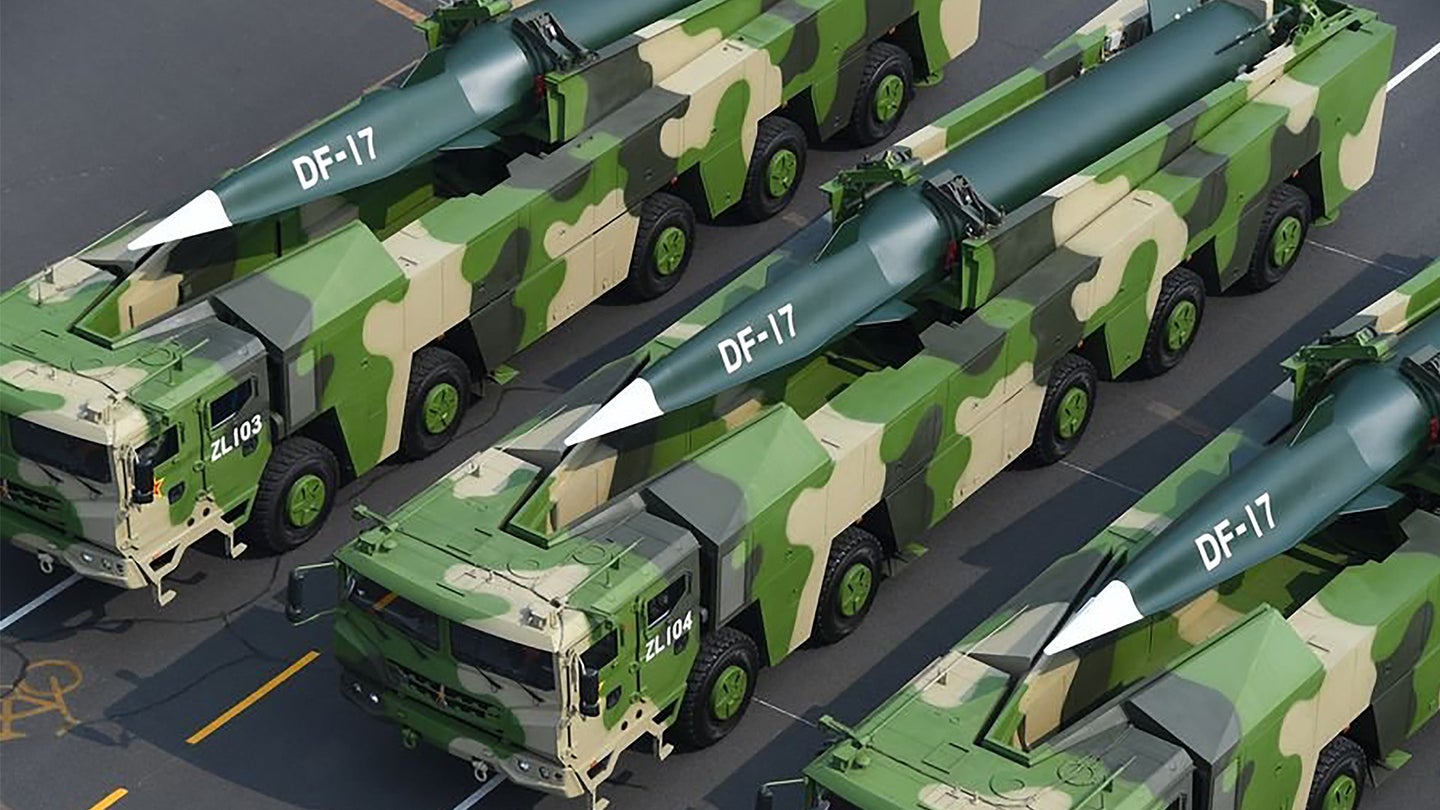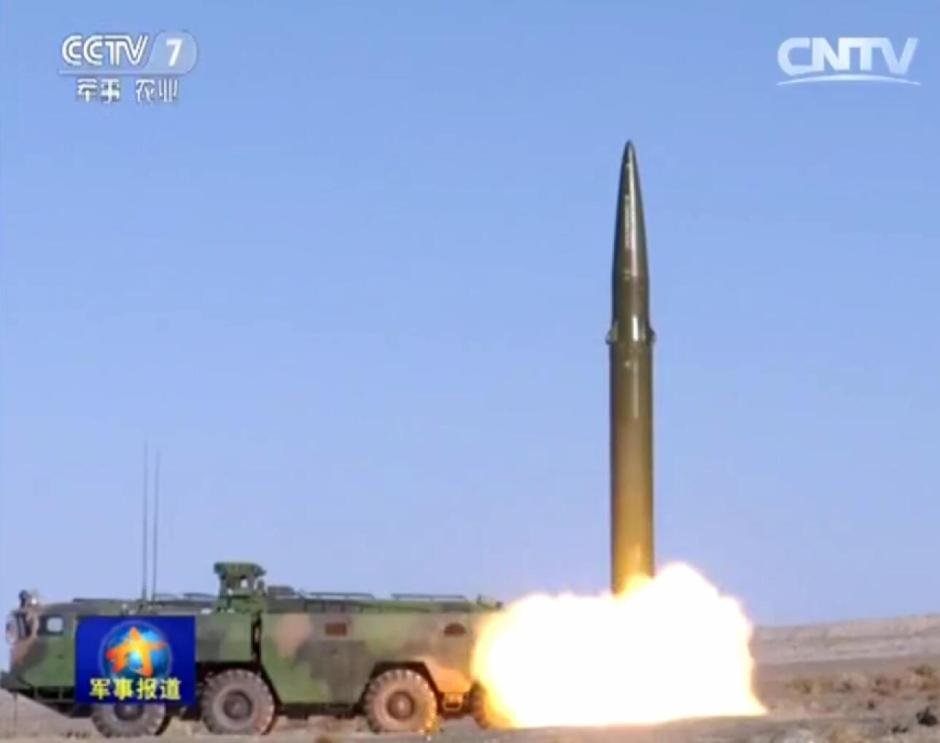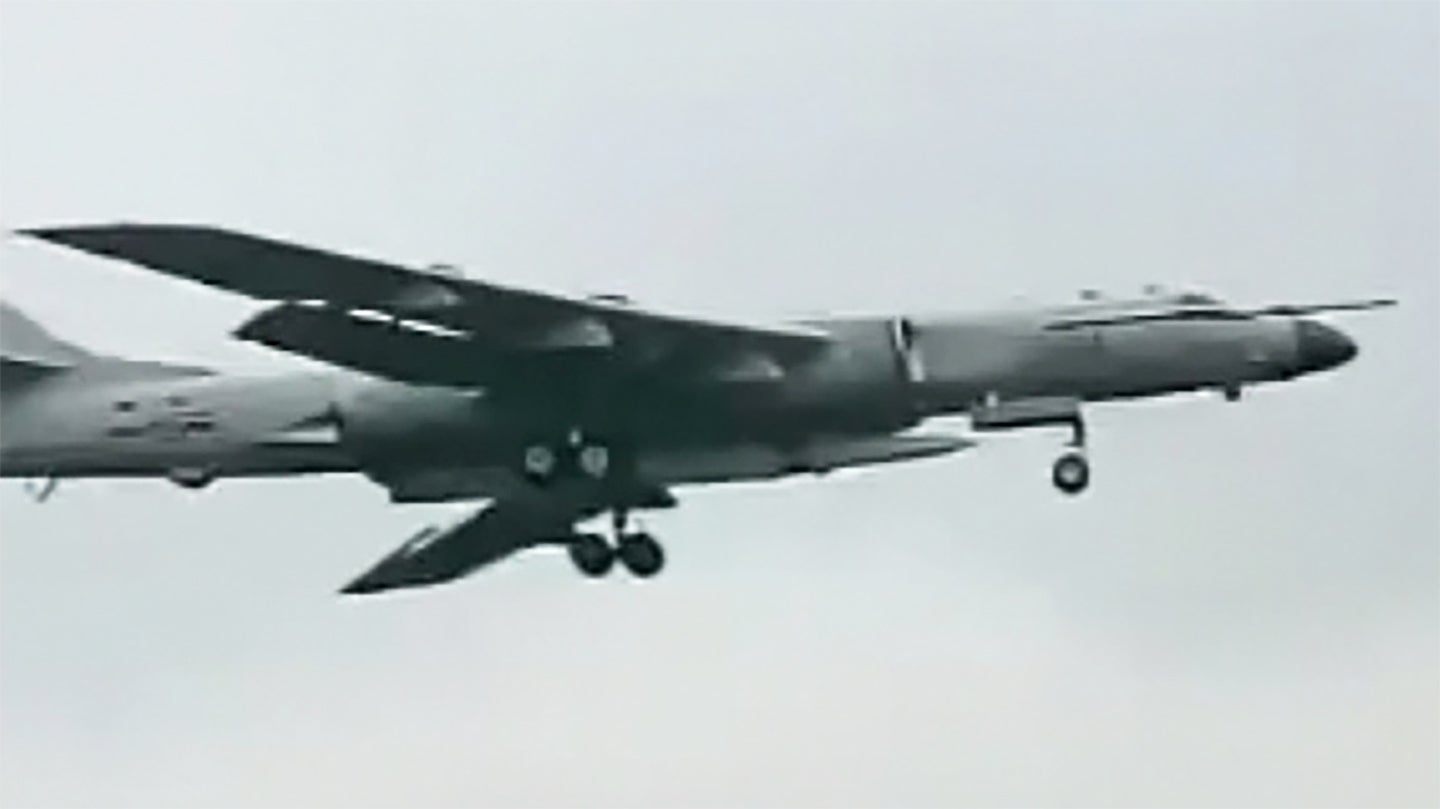Video has emerged out of China showing what appears to be an H-6N missile carrier aircraft with a massive weapon slung underneath it. The unique wedge-shaped profile of the missile’s forward section points to the possibility that the missile is a hypersonic weapon system. In particular, the form factor looks similar to the one found on China’s ground-launched DF-17 hypersonic weapon, which uses a ballistic missile to boost an unpowered DF-ZF hypersonic boost-glide vehicle to a velocity well over Mach 5 before the vehicle continues on maneuvering path through the atmosphere to its target. You can read our previous post on the DF-17 here.
China’s work on air-launched adaptations of their ground-launched ballistic missiles is not necessarily new. An air-launched DF-21D anti-ship ballistic missile is thought to have been in development for some time. The pursuit of an air-launched hypersonic boost-glide vehicle weapon by China should be expected, as well, but this could be the first time we are actually seeing it.
The H-6N is specifically designed to carry outsized loads, from high-speed drone aircraft to anti-ship ballistic missiles, as well as more traditional cruise missiles. It is an advanced outgrowth of the H-6K, which itself is a fully reimagined and updated version of a design that tracks its lineage directly back to the Tu-16 Badger of Soviet origin. You can read all about this unique H-6 variant and its strategic implications in this past piece of ours.
It is entirely logical that China would develop an air-launched hypersonic weapon that leverages an existing ground-launched design. The most obvious and only known choice would be the aforementioned DF-17 that Beijing touted so heavily at its recent high-profile military parade. Although it is supposedly operational, the exact status of this weapon and its capabilities remains unknown, but China sure wants the world to think that it is a fully functioning hypersonic weapon. Regardless, using it, or at least parts of it, such as the DF-ZF vehicle, for an air-launched hypersonic boost-glide vehicle weapon makes sense.

That’s not to say that this solves the mystery of what exactly we are seeing here. Like the U.S., China has a number of hypersonic weapons programs underway and has tested many hypersonic vehicle shapes that could be leveraged for different weapons applications. Work on an air-breathing hypersonic cruise missile is also a certainty. So, this could be an entirely new configuration that features a new hypersonic vehicle, we just don’t know for certain at this time. There is also the possibility that this is a more traditional ballistic missile that uses a maneuvering warhead, like the one found on the DF-21D and DF-26, but the imagery seems to point away from the possibility based on the peculiar nose arrangement on the missile. Better quality footage and photos in the future could alter that line of thinking though.

Being able to lug a hypersonic boost-glide vehicle hundreds or thousands of miles from Chinese territory would put bases that were previously outside the range of those weapons under threat from a so-far indefinable capability. Andersen Air Force Base on Guam and Wake Island, in particular, come to mind, but such a weapon could be used on many other highly defended adversary locales throughout the hemisphere. Hypersonic weapons are also being developed to counter adversary armadas, as well. Such a capability would assume China is a step ahead of the U.S. in that regard, which is debatable.
As it sits now, this video serves as a reminder that a hypersonic arms race is very real and very active. While the U.S. has an alphabet soup of hypersonic programs under development, and more that are classified, China is not standing still, either. Like the Air Force’s own first hypersonic weapon, the bomber-launched AGM-183 ARRW, the People’s Liberation Army would benefit greatly from being able to put any target at risk within thousands of miles of its shores via a currently impossible to defend against and highly-precise air-launched hypersonic boost-glide vehicle. If this one video is any indication, they may be actively trying to keep pace with U.S. developments in that regard. Otherwise, the video shows the aircraft carrying a ballistic missile, which, depending on its application, has its own major strategic implications.
Details surrounding this video and the weapon seen in it are bound to change. We will keep you updated with additional information and analysis as we find out more.
Contact the author: Tyler@thedrive.com
